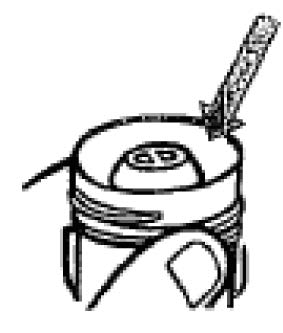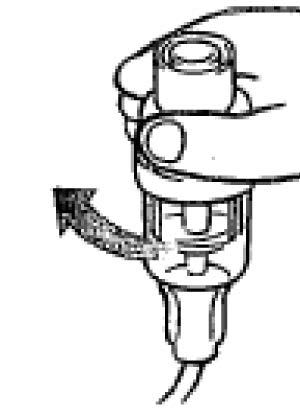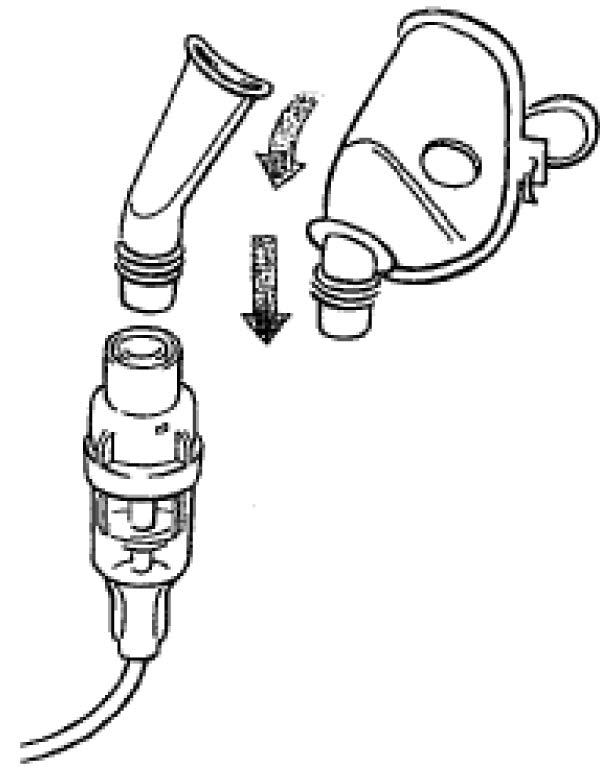On this page
Nebulised epinephrine (adrenaline) is indicated in severe acute laryngotracheobronchitis (in combination with dexamethasone by IM injection).
It must be prescribed by a doctor and should only be repeated on medical prescription.
16.1 Dosage
0.5 ml/kg/dose (using 1 mg/ml ampoule). Do not exceed 5 ml of nebulised epinephrine.
See table.
16.2 Equipment
- Epinephrine, 1 mg/ml ampoule(s)
- 0.9% sodium chloride, if necessary
- Nebuliser + electric air compressor
- Clean tray
- Single patient equipment: paediatric mask + tubing
- 5 ml syringe + 19G needle, single use
16.3 Technique
Aerosol preparation (just before use)
- Verify the prescription: name, prescribed dose, concentration of epinephrine in the ampoule.
- Prepare the equipment.
- Wash hands with soap and water or disinfect them with an alcohol-based solution.
- Open the nebulizer.
- Using the syringe, place the prescribed amount of epinephrine in the lower part of the nebulizer.
- Add enough 0.9% sodium chloride to obtain a total volume of 4 to 4.5 ml in the medicine cup.
Nebulised epinephrine dose by age or weight
| Age |
1 month |
2 months |
3 months |
4-6 months |
7-9 months |
10-11 months |
1-4 years |
> 4 years |
|---|---|---|---|---|---|---|---|---|
| Weight | 4.5 kg | 5 kg | 6 kg | 7 kg | 8 kg | 9 kg | 10-17 kg | > 17 kg |
| Epinephrine (1 mg/ml amp.) |
2 ml | 2,5 ml | 3 ml | 3,5 ml | 4 ml | 4,5 ml | 5 ml | 5 ml |
| 0.9% NaCl to be added |
2 ml | 2 ml | 1 ml | 1 ml | – | – | – | – |
- Screw the top of the nebulizer back on.
- Connect the nebulizer to the mask.
- Dispose of sharps in a safety box.
Administering the aerosol
- Explain the procedure to the child and the person accompanying him: the inhalation lasts about 10 minutes; keep the mask on and breathe slowly and deeply the entire time.
- Have the parents hold the child in a half-seated position.
- Clear the nose, if necessary.
- Attach the tubing to the compressor.
- Start the compressor. Make sure there is mist coming out of the mask.
- Place the mask over the child’s mouth and nose; secure it in place with the strap.
- The inhalation should last no longer than 10 to 12 minutes. Stop the compressor after 10 to 12 minutes (or sooner, if all of the medicine has been nebulised).
- Record the procedure in the patient’s chart.
Monitoring
- Before nebulization: heart rate, respiratory rate and, if possible, SpO2.
- During the nebulization and for 4 hours afterward:
- general condition, level of consciousness, respiratory rate, and SpO2;
- signs of improvement: decreased stridor and improvement in ventilation, level of consciousness and SpO2;
- alert the doctor in case of pallor, tachycardia, arrhythmia, or drop in SpO2 (< 90%).
- Record the monitoring data in the patient’s chart.
16.4 After using the equipment
- Discard the tubing and mask.
- Disassemble the nebulizer and clean all of the parts in soapy water, taking care not to damage the jet (do not use a brush).
- For equipment maintenance (jet, compressor air filter), refer to specific protocol.


